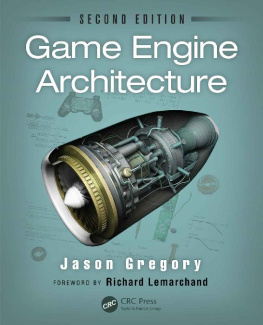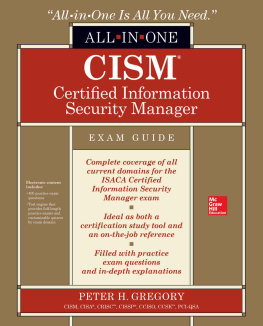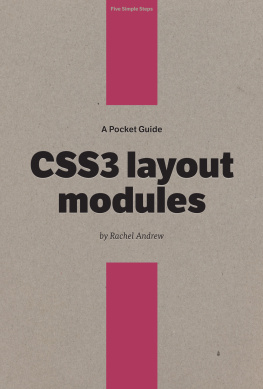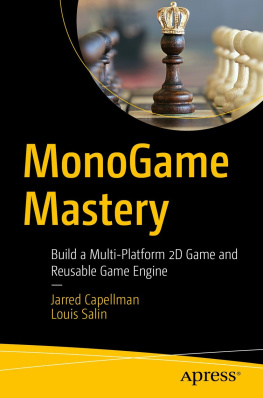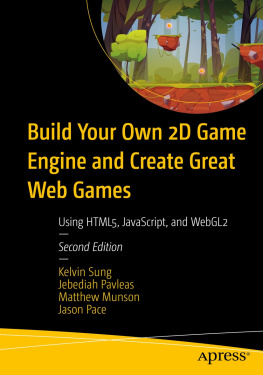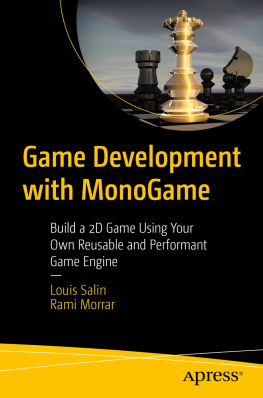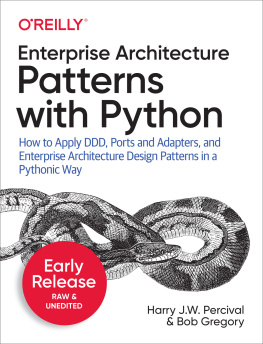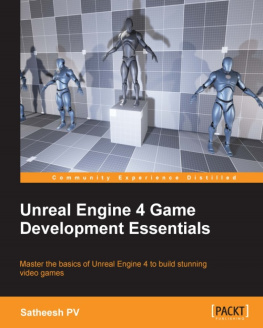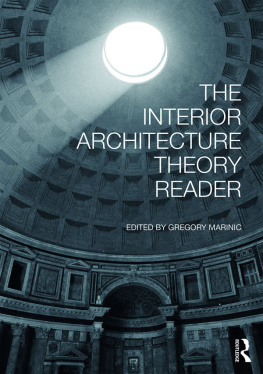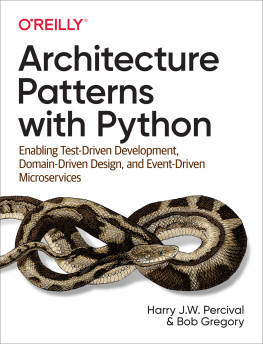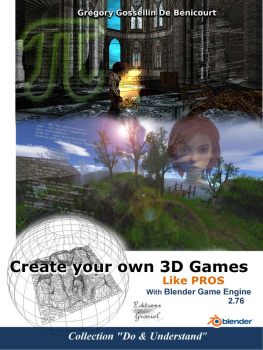Gregory - Game Engine Architecture
Here you can read online Gregory - Game Engine Architecture full text of the book (entire story) in english for free. Download pdf and epub, get meaning, cover and reviews about this ebook. year: 2014, publisher: CRC Press, genre: Computer / Science. Description of the work, (preface) as well as reviews are available. Best literature library LitArk.com created for fans of good reading and offers a wide selection of genres:
Romance novel
Science fiction
Adventure
Detective
Science
History
Home and family
Prose
Art
Politics
Computer
Non-fiction
Religion
Business
Children
Humor
Choose a favorite category and find really read worthwhile books. Enjoy immersion in the world of imagination, feel the emotions of the characters or learn something new for yourself, make an fascinating discovery.
Game Engine Architecture: summary, description and annotation
We offer to read an annotation, description, summary or preface (depends on what the author of the book "Game Engine Architecture" wrote himself). If you haven't found the necessary information about the book — write in the comments, we will try to find it.
Gregory: author's other books
Who wrote Game Engine Architecture? Find out the surname, the name of the author of the book and a list of all author's works by series.
Game Engine Architecture — read online for free the complete book (whole text) full work
Below is the text of the book, divided by pages. System saving the place of the last page read, allows you to conveniently read the book "Game Engine Architecture" online for free, without having to search again every time where you left off. Put a bookmark, and you can go to the page where you finished reading at any time.
Font size:
Interval:
Bookmark:
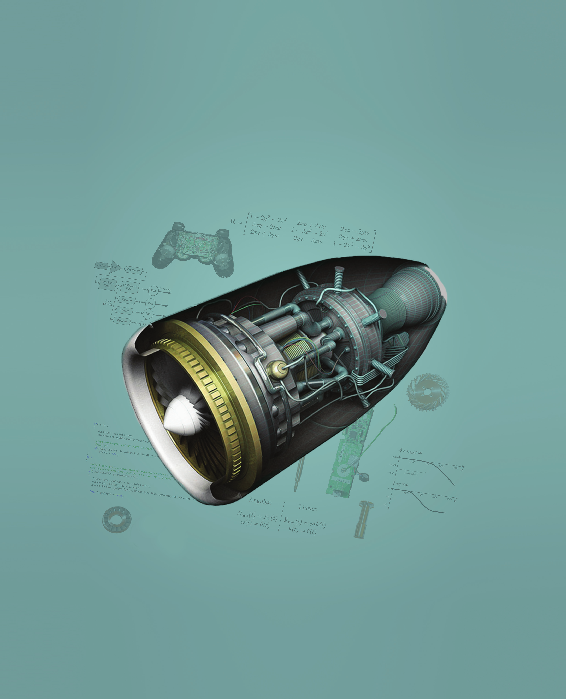




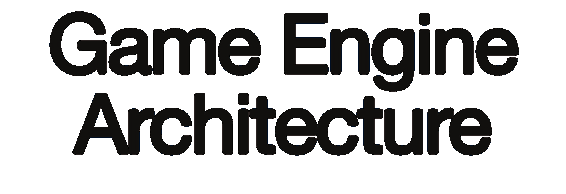







 Computer Game DevelopmentGregory S E C O N D E D I T I O N S E C O N D E D I T I O N Game Engine Ar Game Engine Architecture Game Engine The highly recommended first edition of Game Engine Architecture provided a complete guide to the theory and practice of game engine software development. Updating the content to match todays landscape of game engine architecture, this Architecture second edition continues to thoroughly cover the major components that make up a typical commercial game engine. New to the Second Edition Information on new topics, including the latest variant of the C++ programming language, C++11, and the architecture of the eighth generation of gaming consoles, the Xbox One and PlayStation 4 New chapter on audio technology covering the fundamentals of the physics, mathematics, and technology that go into creating an AAA game audio engine Updated sections on multicore programming, pipelined CPU architecture and optimization, localization, pseudovectors and Grassman algebra, dual quaternions, SIMD vector math, memory alignment, and anti-aliasing chitectur Insight into the making of Naughty Dogs latest hit, The Last of Us The book presents the theory underlying various subsystems that comprise a commercial game engine as well as the data structures, algorithms, and software interfaces that are typically used to implement them. It primarily focuses on the engine itself, including a host of low-level foundation systems, the rendering engine, the collision system, the physics simulation, character animation, and audio. An in-depth discussion on the gameplay foundation layer delves into the games object model, world editor, event system, and scripting system. e An awareness-building tool and a jumping-off point for further learning, Game EngineArchitecture, Second Edition gives you a solid understanding of both the theory and common practices employed within each of the engineering disciplines covered. e An awareness-building tool and a jumping-off point for further learning, Game EngineArchitecture, Second Edition gives you a solid understanding of both the theory and common practices employed within each of the engineering disciplines covered.
Computer Game DevelopmentGregory S E C O N D E D I T I O N S E C O N D E D I T I O N Game Engine Ar Game Engine Architecture Game Engine The highly recommended first edition of Game Engine Architecture provided a complete guide to the theory and practice of game engine software development. Updating the content to match todays landscape of game engine architecture, this Architecture second edition continues to thoroughly cover the major components that make up a typical commercial game engine. New to the Second Edition Information on new topics, including the latest variant of the C++ programming language, C++11, and the architecture of the eighth generation of gaming consoles, the Xbox One and PlayStation 4 New chapter on audio technology covering the fundamentals of the physics, mathematics, and technology that go into creating an AAA game audio engine Updated sections on multicore programming, pipelined CPU architecture and optimization, localization, pseudovectors and Grassman algebra, dual quaternions, SIMD vector math, memory alignment, and anti-aliasing chitectur Insight into the making of Naughty Dogs latest hit, The Last of Us The book presents the theory underlying various subsystems that comprise a commercial game engine as well as the data structures, algorithms, and software interfaces that are typically used to implement them. It primarily focuses on the engine itself, including a host of low-level foundation systems, the rendering engine, the collision system, the physics simulation, character animation, and audio. An in-depth discussion on the gameplay foundation layer delves into the games object model, world editor, event system, and scripting system. e An awareness-building tool and a jumping-off point for further learning, Game EngineArchitecture, Second Edition gives you a solid understanding of both the theory and common practices employed within each of the engineering disciplines covered. e An awareness-building tool and a jumping-off point for further learning, Game EngineArchitecture, Second Edition gives you a solid understanding of both the theory and common practices employed within each of the engineering disciplines covered.
The book will help you on your journey through this fascinating and multifaceted field. J a s o n G r e g o r y S E C O N D K15874 F O R E W O R D B Y E D I T I O N Richard Lemarchand S E C O N D E D I T I O N Game Engine Architecture This page intentionally left blank S E C O N D E D I T I O N Game Engine Architecture J a s o n G r e g o r yL e a d P r o g r a m m e r , N a u g h t y D o g I n c . F O R E W O R D B Y Richard Lemarchand Boca Raton London New York CRC Press is an imprint of the Taylor & Francis Group, an informa business CRC Press Taylor & Francis Group 6000 Broken Sound Parkway NW, Suite 300 Boca Raton, FL 33487-2742 2015 by Taylor & Francis Group, LLC CRC Press is an imprint of Taylor & Francis Group, an Informa business No claim to original U.S. Government works Version Date: 20140624 International Standard Book Number-13: 978-1-4665-6006-2 (eBook - PDF) This book contains information obtained from authentic and highly regarded sources. Reasonable efforts have been made to publish reliable data and information, but the author and publisher cannot assume responsibility for the validity of all materials or the consequences of their use. The authors and publishers have attempted to trace the copyright holders of all material reproduced in this publication and apologize to copyright holders if permission to publish in this form has not been obtained. If any copyright material has not been acknowledged please write and let us know so we may rectify in any future reprint.
Except as permitted under U.S. Copyright Law, no part of this book may be reprinted, reproduced, transmitted, or utilized in any form by any electronic, mechanical, or other means, now known or hereafter invented, including photocopying, microfilming, and recording, or in any information storage or retrieval system, without written permission from the publishers. For permission to photocopy or use material electronically from this work, please access www.copyright.com (http://www.copyright.com/) or contact the Copyright Clearance Center, Inc. (CCC), 222 Rosewood Drive, Danvers, MA 01923, 978-750-8400. CCC is a not-for-profit organization that provides licenses and registration for a variety of users. Trademark Notice: Product or corporate names may be trademarks or registered trademarks, and are used only for identification and explanation without intent to infringe. Visit the Taylor & Francis Web site athttp://www.taylorandfrancis.comand the CRC Press Web site athttp://www.crcpress.com Dedicated to Trina, Evan and Quinn Gregory, in memory of our heroes, Joyce Osterhus, Kenneth Gregory and Erica Gregory. Visit the Taylor & Francis Web site athttp://www.taylorandfrancis.comand the CRC Press Web site athttp://www.crcpress.com Dedicated to Trina, Evan and Quinn Gregory, in memory of our heroes, Joyce Osterhus, Kenneth Gregory and Erica Gregory.
This page intentionally left blank Contents 1.1 Structure of a Typical Game Team 1.2 What Is a Game? 1.3 What Is a Game Engine? 1.4 Engine Differences Across Genres 1.5 Game Engine Survey vii viii CONTENTS 1.6 Runtime Engine Architecture 1.7 Tools and the Asset Pipeline 2.1 Version Control 2.2 Microsoft Visual Studio 2.3 Profiling Tools 2.4 Memory Leak and Corruption Detection 2.5 Other Tools 3.1 C++ Review and Best Practices 3.2 Data, Code and Memory 3.3 Catching and Handling Errors 3.4 Pipelines, Caches and Optimization 4.1 Solving 3D Problems in 2D 4.2 Points and Vectors 4.3 Matrices 4.4 Quaternions 4.5 Comparison of Rotational Representations 4.6 Other Useful Mathematical Objects 4.7 Hardware-Accelerated SIMD Math 4.8 Random Number Generation 5.1 Subsystem Start-Up and Shut-Down 5.2 Memory Management 5.3 Containers 5.4 Strings 5.5 Engine Configuration CONTENTS ix 6.1 File System 6.2 The Resource Manager 7.1 The Rendering Loop 7.2 The Game Loop 7.3 Game Loop Architectural Styles 7.4 Abstract Timelines 7.5 Measuring and Dealing with Time 7.6 Multiprocessor Game Loops 7.7 Networked Multiplayer Game Loops 8.1 Types of Human Interface Devices 8.2 Interfacing with a HID 8.3 Types of Inputs 8.4 Types of Outputs 8.5 Game Engine HID Systems 8.6 Human Interface Devices in Practice 9.1 Logging and Tracing 9.2 Debug Drawing Facilities 9.3 In-Game Menus 9.4 In-Game Console 9.5 Debug Cameras and Pausing the Game 9.6 Cheats 9.7 Screenshots and Movie Capture 9.8 In-Game Profiling 9.9 In-Game Memory Stats and Leak Detection x CONTENTS 10.1 Foundations of Depth-Buffered Triangle Rasterization 10.2 The Rendering Pipeline 10.3 Advanced Lighting and Global Illumination 10.4 Visual Effects and Overlays 10.5 Further Reading 11.1 Types of Character Animation 11.2 Skeletons 11.3 Poses 11.4 Clips 11.5 Skinning and Matrix Palette Generation 11.6 Animation Blending 11.7 Post-Processing 11.8 Compression Techniques 11.9 Animation System Architecture 11.10 The Animation Pipeline 11.11 Action State Machines 11.12 Animation Controllers 12.1 Do You Want Physics in Your Game? 12.2 Collision/Physics Middleware 12.3 The Collision Detection System 12.4 Rigid Body Dynamics 12.5 Integrating a Physics Engine into Your Game 12.6 Advanced Physics Features 13.1 The Physics of Sound 13.2 The Mathematics of Sound 13.3 The Technology of Sound 13.4 Rendering Audio in 3D 13.5 Audio Engine Architecture 13.6 Game-Specific Audio Features CONTENTS xi 14.1 Anatomy of a Game World 14.2 Implementing Dynamic Elements: Game Objects 14.3 Data-Driven Game Engines 14.4 The Game World Editor 15.1 Components of the Gameplay Foundation System 15.2 Runtime Object Model Architectures 15.3 World Chunk Data Formats 15.4 Loading and Streaming Game Worlds 15.5 Object References and World Queries 15.6 Updating Game Objects in Real Time 15.7 Events and Message-Passing 15.8 Scripting 15.9 High-Level Game Flow 16.1 Some Engine Systems We Didnt Cover 16.2 Gameplay Systems Index This page intentionally left blank Theveryfirstvideogamewasbuiltentirelyoutofhardware,butrapidad vancements in microprocessors have changed all that. These days, video games are played on versatile PCs and specialized video game consoles that use soft ware to make it possible to off er a tremendous variety of gaming experiences. Its been 50 years since those first primitive games, but the in dustry is still considered by many to be immature. It may be young, but when you take a closer look, you will find that things have been developing rapidly. Video games are now a multi-billion-dollar industry covering a wide range of demographics. Video games come in all shapes and sizes, falling into categories or genres covering everything from solitaire to massively multiplayer online role-playing games, and these games are played on virtually anything with a microchip in it.
Next pageFont size:
Interval:
Bookmark:
Similar books «Game Engine Architecture»
Look at similar books to Game Engine Architecture. We have selected literature similar in name and meaning in the hope of providing readers with more options to find new, interesting, not yet read works.
Discussion, reviews of the book Game Engine Architecture and just readers' own opinions. Leave your comments, write what you think about the work, its meaning or the main characters. Specify what exactly you liked and what you didn't like, and why you think so.

